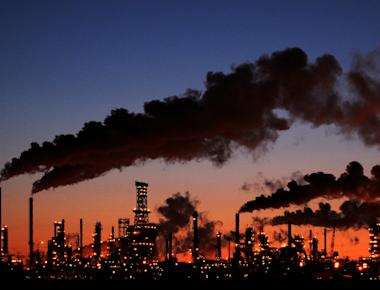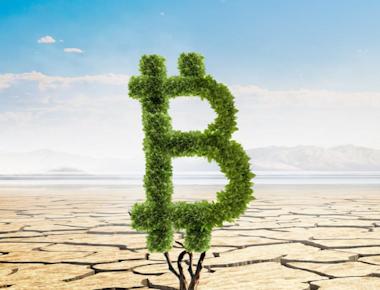

Are fossil fuels the world’s leading source of carbon emissions? Well, yes and yes. Fossil fuels cause 87 percent of human carbon emissions, employing a net negative effect of fossil fuels on the environment.

Heat Power
Fossil fuels do indeed benefit humanity in the sense of generating power and energy used in everyday life. Turning on the fan, starting a car, or even texting your friends for a hang-out session all use fossil fuels, but these simple tasks can be done by means aside from fossil fuels. Renewable or clean energy such as solar panels, wind turbines, and water turbines are all examples of clean energy that mitigate carbon emissions and other toxic gaseous emissions into the atmosphere and the waterways.
Carbon emissions from fossil fuels cause problems more significant than just ozone depletion and global warming issues. Through months of research and investigations, a study from the National Research Development Corporation concluded that “Coal, oil, and gas development pose myriad threats to our waterways and groundwater. Coal mining operations wash acid runoff into streams, rivers, and lakes and dump vast quantities of unwanted rock and soil into streams. Oil spills and leaks during extraction or transport can pollute drinking water sources and jeopardizes entire freshwater or ocean ecosystems. Fracking and its toxic fluids have also been found to contaminate drinking water. Meanwhile, all drilling, fracking, and mining operations generate enormous volumes of wastewater, which are laden with heavy metals, radioactive materials, and other pollutants. Industries store this waste in open-air pits or underground wells that can leak or overflow into waterways and contaminate aquifers with pollutants linked to cancer, congenital disabilities, neurological damage, and much more.”

Physicians, Scientists, and Engineers for Healthy Energy
The NRDC’s results provide deep insight into the dirtiest effects of fracking and mining. Not only do carbon emissions from fossil fuels impact the environment, but carbon emissions have reached the next generation of children. This is just one reason to eliminate or reduce the use of fossil fuels. These congenital disabilities and neurological damages can be avoided or drastically reduced by adopting clean energy and other renewable energy sources.
Neurological damage and congenital disabilities are just a few of the problems that come from fossil fuels. In addition, climate change is wiping out humans’ primary source of food on land. That’s what’s happening in the world’s oceans as they absorb increasing amounts of carbon dioxide from the burning of fossil fuels. Growing acidification threatens to kill off whole species of phytoplankton, microscopic ocean plants that support nearly all marine life. Phytoplankton is crucial to the survival of humans and all animals, as through photosynthesis, phytoplankton use sunlight, nutrients, carbon dioxide, and water to produce oxygen and nutrients for other organisms.

Centre for Ocean Life
With 71% of the Earth covered by the ocean, phytoplankton is responsible for producing up to 50% of the oxygen we breathe.

Science Advances
The destruction of such a large quantity of phytoplanktons is detrimental to the world. Emissions from fossil fuels are killing off 50 percent of the oxygen sources. Think about it conceptually, Continuing to burn fossil fuels will only lead to the killing of the primary source of the world’s oxygen, and vegetation will result in a dying planet. That dying planet is coming up on us faster than ever. Phytoplankton is the source of all seafood, feeding all primary consumers and expanding the ever-growing ocean web, producing a biodiverse habitat for all ocean animals.
Carbon isn’t the only harmful gas emitted by fossil fuels. When fossil fuels are burned, they release nitrogen oxides into the atmosphere, contributing to the formation of smog and acid rain. Airborne nitrogen pollution affects the quality of the air we breathe and the land and the water. Nitrogen is the most abundant element in the air and is essential to plant and animal life. Sources of nitrogen from human activities, such as electric power generation, industry transportation, and agriculture, can upset the natural balance of nitrogen in the environment.

Our World In Data
Excess nitrogen in the atmosphere can produce ammonia and ozone, impairing our ability to breathe, limiting visibility, and altering plant growth. When excess nitrogen comes back to Earth from the atmosphere, it can harm the health of forests, soils, and waterways. This multitude of evidence enhances our understanding of the toxicity of fossil fuels. The adverse effects of nitrates are killing valuable crops we use for food. Destruction of produce has a snowballing effect which ultimately magnifies the shortages of food experienced around the world. Though nitrogen emissions aren’t the significant causes of world hunger, nitrogen emissions are responsible for killing critical crops, pushing forth world hunger and other food shortages. In 2014, the World Health Organization (WHO) found that climate change would lead to about 250,000 additional deaths each year between 2000 and 2010 from factors such as malnutrition, heat stress, and malaria. Thus, we can see the immediate effects of nitrogen emissions, destroying crops and significant food sources.
In the end, fossil fuels cause everything in the world to go downhill, from carbon emissions to neurological damage in newborn children, and the destruction of phytoplankton, the single most important plant, and finally, the causation of food shortages across the world. In part 2 of this series, we will discuss the solutions and alternatives to fossil fuels.
Sources
Main sources of carbon dioxide emissions: CO2 Human Emissions. Main sources of carbon dioxide emissions | CO2 Human Emissions. (n.d.). https://www.che-project.eu/news/main-sources-carbon-dioxide-emissions.
June 29, 2018 M. D. (2021, April 21). fossil fuels. NRDC. https://www.nrdc.org/stories/fossil-fuels-dirty-facts.
Kirby, D. (2015, July 22). A Tiny Plant That Feeds the Oceans’ Biggest Creatures Could Be Wiped Out by Climate Change. TakePart. http://www.takepart.com/article/2015/07/22/ocean-acidification-wiping-out-phytoplankton-feeds-dolphins-whales-polar-bears.
Projects - Centre for Ocean Life (n.d.). https://www.oceanlifecentre.dk/projects.
Righetti, D., Vogt, M., Gruber, N., Psomas, A., & Zimmermann, N. E. (2019, May 1). Global pattern of phytoplankton diversity driven by temperature and environmental variability. Science Advances. https://advances.sciencemag.org/content/5/5/eaau6253.
Subscribe to our newsletter!
Quick Links
Legal Stuff



